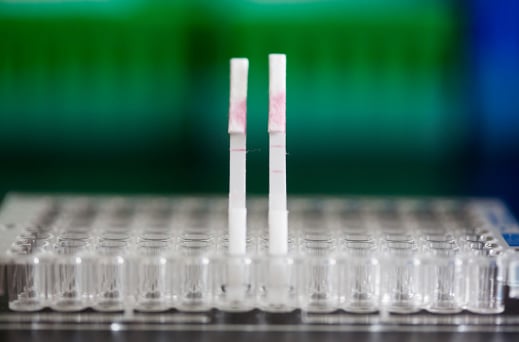Here are 20 foods that offer the most benefits pound for pound than any other foods on the planet. They not only show up on our massive list of Superfoods they also make it onto plenty of top tens across the Internet, and several have long been known to provide plenty of nutrients and good things for the body. There are a few that you might not be familiar with, so consider this your introduction, and now you can get to know them better in the near future.

1. Spinach
Much has been written about the virtues of spinach, and rightly so. It’s one of the most nutrient-dense foods you can eat. It’s also readily available at most local supermarkets, and reasonably priced. You can get it fresh in the produce section, or you can buy it frozen in leaf form, and also canned in the canned veggies aisle. The main concern is getting more of it into your system so you can reap all of the positive benefits.
Benefits
Right away spinach is going to go to work for you, providing you with energy, and helping you to fill your stomach without adding a lot of calories to your daily intake. When you factor in the phytonutrients working as antioxidants you’re doing yourself a huge favor with the battle against free radical damage. Not to mention you’re helping to nourish your body on a cellular level, providing increased energy, and it aids any weight loss efforts.
Vitamin Breakdown per Cup – Raw, think fresh leafy greens
Vitamin A – 2813 IU – over half of what you need daily.
Vitamin K – 145mcg – almost twice as much as needed daily.
Folate – 58.2mcg – a good chunk of your daily requirement.
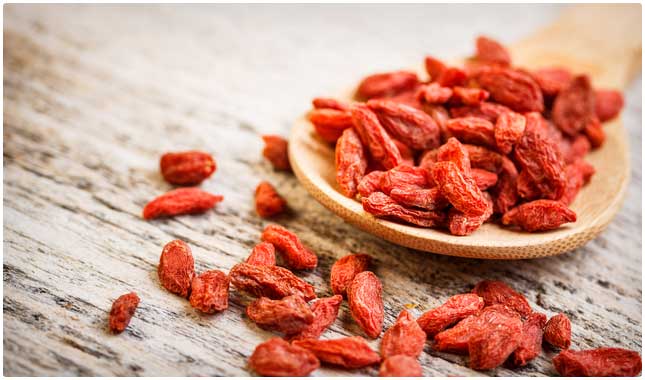
2. Goji Berries
Many people are just finding out how good goji berries are for your overall feeling of well-being. You’ll want to find dried goji berries, and not simply rely on a juice or other product claiming to contain goji berries in it. They make a great snack to hold you over between meals, and when compared to drinking phony energy drinks, you can get actual energy from these, and also be introducing plenty of antioxidants into your system.
Benefits
Your immune system gets a dose of support when you eat a serving of goji berries, and you’ll also be helping yourself beat the onslaught of free radicals that occur as a result of a stressful environment and processed foods that don’t offer nutritional support to the body. The benefit that most of us would be interested in is the ability of goji berries to help us fight fatigue. It’s no wonder that our modern lifestyles have us burning the candle at both ends, and by eating a food like these berries you’ll be increasing the amount of time it takes you to wear out.
Vitamin Breakdown per Ounce – Dried, the most commonly found version.
Vitamin A – 170% of your daily value.
Vitamin C – 20% not quite as good as an orange, but still good.
Protein – 4g – a surprising amount of protein for a fruit.

3. Salmon
What makes this fish so special that it stands apart from all the others? It’s the omega-3 content that does it, and of course it has the benefit that most fish has of being high in protein. Many also prefer the delicate, not-so-fishy flavor of salmon to other fish. You’ll want to stick to Alaskan wild salmon to get the full amount of benefits, and make sure that you’re not eating smoked salmon as it does not have the same nutritional benefits as freshly caught and cooked.
Benefits
For those of you that are strength training, salmon will provide support to your muscle tissue with the protein it contains. The reason the omega-3s are so important is that they provide vital support to your heart and circulatory system. You’ll also receive tertiary benefits in the form of increased memory function and a decrease in the likelihood of degenerative diseases like Alzheimers. It also helps to make your skin and hair look their best.
Vitamin Breakdown per 100g – wild Alaskan, seek this out specifically.
Vitamin A – 9% of your daily needs.
Vitamin B1 – 13% of what you need each day, helps with heart health.
Protein – 20g – making this a fantastic protein source for those lifting weights.
Niacin – 42% of your daily needs, helps to keep your skin and hair tip-top.

4. Avocado
If you’re not already a fan of avocado, you should try adding more of it into your life. It tends to be one of the more expensive items in the produce section, especially if you go the organic route. It can also be a little tricky to pick the right ones and then consume them before they go bad. But you don’t have to eat them everyday in order to benefit from them. Adding one or two a week to your diet would be a great start, and would keep costs down.
Benefits
One of the most referenced benefits of avocado is their amounts of healthy monounsaturated fat. It’s interesting that this is a high-fat fruit, as most of them are very low fat or fat free. These fats actually help you to lose fat, if that’s what you’re trying to do. They also help you to feel fuller longer, and are not the same sort of fats found in a cheeseburger. The carotenoid levels help with eye health, and avocados in general will help stabilize your blood glucose levels so you don’t hit dangerous peaks and valleys.
Vitamin Breakdown per 100g – Raw
Monounsaturated fat – 10g – This means roughly 10% of the avocado is healthy fat!
Vitamin B6 – 16% of what you need daily for proper metabolism.
Folate – 22% of your daily requirement, for heart disease prevention.

5. Quinoa
Known by vegetarians for several years now, quinoa has been catching on more in the mainstream as a tasty and filling way to complement a meal, or be the foundation of a meal. Even those that follow a no wheat diet can turn to quinoa, although it doesn’t quite appeal to those that have written off grains altogether. If you’re not familiar with how to cook it you can get up to speed quickly, and it’s now readily available at most supermarkets, where once it was a bit rare.
Benefits
You’re getting a quality protein without the cholesterol and fat that can come with animal sources. You’re also getting smart carbs that don’t register very highly on the Glycemic Index, so your body can process them without converting them to fat later. On top of that it doesn’t contain much fat, so you can eat this when following a weight loss plan, and it also keeps you under the limit for calories if you’re watching those.
Vitamin Breakdown per Cup
Fat – 1.9g – A low fat count and low calorie count make this a winner for dieters.
Folate – !0% of your daily requirement, good for maintaining a healthy heart.
Protein 4.4g – A relatively high protein level for a grain.
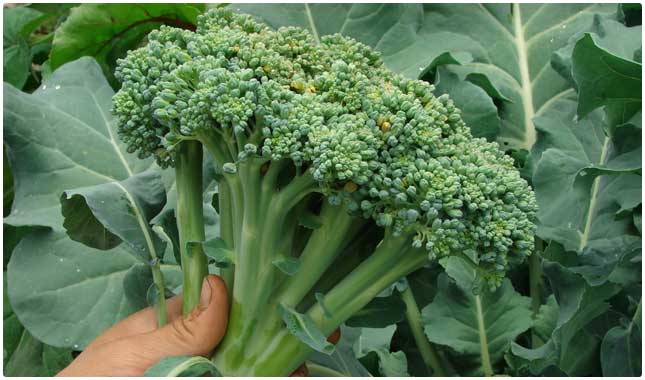
6. Broccoli
The quintessential healthy food, broccoli has often been referenced as a good side item to add to any meal to health things up. Just as long as you don’t smother it in butter or cheese it’s able to retain it’s healthy effects. Steam it up to lock in the flavor, make it easier to eat, and retain as many nutrients as possible. There are only a few buying options when it comes to broccoli, you can get it fresh from the produce aisle or find it in the frozen vegetables section. Either way, opting for organic is a great idea on this one.
Benefits
The fiber in broccoli will help keep things in order, digestively speaking, and it is a good non-dairy source of calcium. The Vitamin C that one serving contains is all that you need for the day, and this will help your body stave off illnesses. The Vitamin K it has doesn’t get much press but is important if you want to keep your bones healthy. It’s great for your eyes and your heart, and can even help to keep cancer away.
Vitamin Breakdown per 100g – Raw
Vitamin C – 150% of your daily recommendation, so you’re more than covered.
Vitamin B6 – 10% of what you need to keep your metabolism strong.
Fiber – 2.6g – May not seem like a lot, but it’s a tenth of your daily needs.

7. Almonds
Almonds provide a go anywhere snacking option that will help you to feel full between meals, and give you the energy you need to start the day. Just make sure that when you choose your almonds you’re not getting the kind that have a lot of salt or oil added like those that are dry roasted. Go for raw almonds, and don’t overeat them because since they’re crunchy and snacky it’s easy to keep munching on them.
Benefits
Almonds are often mentioned by fitness instructors as a way to help feed your muscles, but they also have plenty of other benefits that makes them worthy of making it onto your daily menu. They help prevent heart attacks, and can reduce the amount of bad cholesterol produced in the body. They are a source of healthy fat, and can help your brain function better. If you weren’t on board already they also help to strengthen bones and teeth.
Vitamin Breakdown per 100g – Raw Almonds
Iron – 20% of your daily recommendation, for those with an iron deficiency.
Protein – 21g – making them good for enhancing lean muscle.
Vitamin B2 – 59% of what is needed daily, helping to give you that energetic feeling.
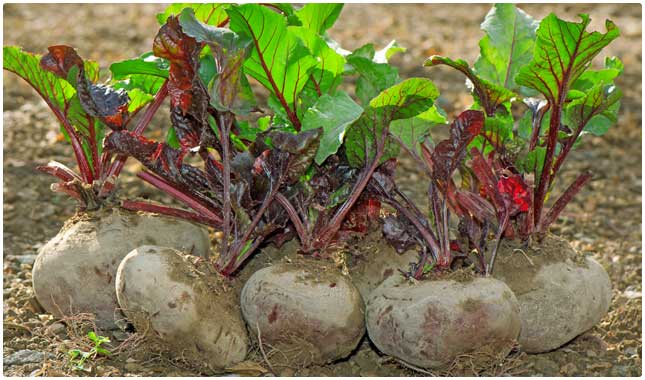
8. Beets
Beets are unique because they contain things that are good for you that are only found in beets. What you’re looking for here is the beetroot, and not necessarily the pickled beets you’ll find in jars and on Greek salads. If you’re intimidated by the thought of preparing and cooking beetroot, there are plenty of recipes online that can show you how it’s done. It’s worth the time and effort to start incorporating more beets into your diet.
Benefits
The boron in beets will help put the pep back in your step, sexually speaking. You’ll also feel a general sense of having more energy. They are great for nourishing the brain as well, and can assist in lowering your blood pressure. Because of the broad amount of vitamins and minerals they contain, you can add them to smoothies to instantly up your nutrient count without adding to the calories or fat.
Vitamin Breakdown per Cup
Folate – 27% of what you need to help prevent cancer and heart disease.
Magnesium – 6% of your daily requirement to keep your energy levels up.
Vitamin C – 8% of your daily needs, use other foods on this list to get you there.

9. Sweet Potatoes
Sweet potatoes made it to the big time when they were featured on Oprah has a superfood that was flying under the radar. What’s nice about them is that they easy to cook, with lots of wiggle room for error. They also fill you up, are brimming with vitamins, and contain fiber which is essential for the proper functioning of your digestive system. They are a nice addition to any meal, and can provide instant balance since they fall somewhere between a starch and a vegetable.
Benefits
There are a wide range of benefits for sweet potatoes, but some of the highlights are that they can help to prevent a heart attack, keep your skin looking young, help you to feel relaxed, keep your immune system working well, gives you more energy, and contains antioxidants that can help reduce the amount of breakdown in your body due to free radicals. This is why they consistently make lists of superfoods and healthiest vegetables.
Vitamin Breakdown per 100g
Vitamin A – 384% – almost four times more than the daily recommendation!
Vitamin C – 33% of what you need daily of this powerful antioxidant.
Protein – 2g – a nice source of plant-based protein.

10. Tomatoes
It’s well known that tomatoes are good for the body, and the more research that is done on them the more they seem to rank high on the health-o-meter. There isn’t one specific reason to eat them, because they help with so many different things. They’re also a very versatile food, you can add them fresh to a salad, cook them up into a sauce, or drop them in the blender if you’re making a fruit or vegetable smoothie. Just be careful that you don’t consider eating ketchup or pizza a way to eat more tomatoes.
Benefits
The reason tomatoes get so much attention is that they help with the baddest of the baddies when it comes to health. They can help prevent cancer, and they can fight off heart disease when eaten on a regular basis. The lycopene is believed to be what’s helping to avoid cancer, and an ensemble of vitamins and minerals is responsible for helping your cardiovascular system.
Vitamin Breakdown per 100
Vitamin A – 17% of your daily requirement, an effective antioxidant
Vitamin C – 23% RDV – Helps to round out your daily intake of this essential vitamin.
Vitamin B6 – 5% of your daily needs, helps to metabolize your foods.

11. Kale
A lot of times kale gets lumped together with spinach, but it deserves its own ranking on the list of world’s healthiest foods. While not as ubiquitous as spinach, kale is gaining ground because it is just as healthy, and even more so in some areas. You can use it the same way as spinach, as a healthy side dish. You can also add it to smoothies to make them green and to pack them with vitamins. Some people prefer the taste of kale to spinach, so an extra bonus there.
Benefits
The reason kale is becoming popular is because it helps you fill up without a lot of calories to speak of. It doesn’t have any fat, has plenty of fiber as well as iron and Vitamin K. Because of its antioxidant content you’ll get anti-inflammatory benefits which helps to reduce the symptoms of inflammation, while also helping to avoid the rise of certain diseases. It also helps to restore and maintain an alkaline state.
Vitamin Breakdown per 100g – Fresh and Raw, the kind found in the produce aisle.
Vitamin A – Double the amount that’s required daily.
Vitamin C – Twice as much as what you need each day.
Protein – 4.3g – an impressive source of vegetable protein.

12. Raspberries
Berries in general are a good source of antioxidants, but raspberries stand out for their impressive concentrations. This makes it a good idea to keep a pack of frozen organic raspberries that you can easily add to your smoothies for a fruity flavor and plenty of vitamins and minerals. Of course you can always get them fresh, but it can be somewhat hard to find decent fresh organic raspberries, and to eat them before they go bad.
Benefits
If you’re watching your weight, you can count on raspberries as a low fat, high fiber way to give you flavor without sacrificing your diet. But aside from any weight loss support they may provide, you’re going to get plenty of positive benefits from the antioxidants, which helps fight free radical damage, and keeps your body running smoothly in general. If you have arthritis there’s a particular reason to increase your consumption of raspberries, as they’ve shown to help with the inflammation causing your symptoms.
Vitamin Breakdown per 100g
Vitamin C – 44% of your RDV, makes it easy to get the rest from other foods.
Calcium – Just 2% of what you need each day, but a non-dairy source to keep in mind.
Iron – 4% – If you start eating more foods on this list, you’ll easily make up the rest.
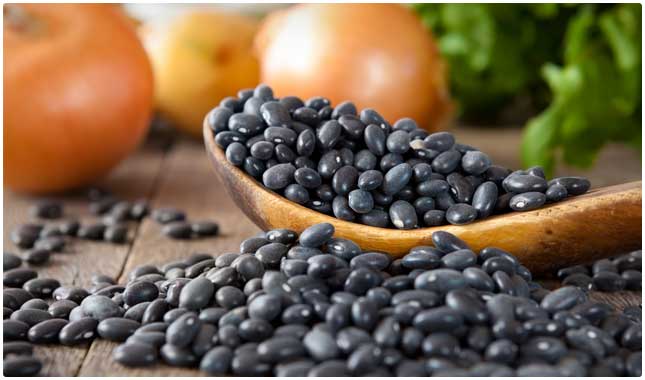
13. Black Beans
Black beans are the only bean to make it onto our list of the healthiest foods in the world. They’ve been used in Mexican and Spanish recipes for hundreds of years, and only now is it being discovered how healthy they really are. They are now a popular side dish option at most restaurants, so it’s easy enough to swap out fattening or unhealthy menu items with this super food.
Benefits
It’s commonly understood that fruits and vegetables contain antioxidants, but surprisingly enough black beans contain them as well. Beans in general are good to add to your diet, as they are a carbohydrate that is digested more slowly, so you feel fuller longer and helping to stabilize blood sugar levels. This is crucial for those that have been told they run the risk of getting diabetes, and it also helps weight loss efforts which brings a host of additional benefits. They also contain fiber which helps to regulate your digestive system.
Vitamin Breakdown per 100g
Calcium – 6% – A great non-dairy source of calcium.
Protein – 8.2g – This represents a great source of non-animal protein.
Fat – 0.3g – The low fat content of black beans is great for maintaining a healthy weight.

14. Cantaloupe
Some think that cantaloupe is a negative calorie food, but whether it is or it isn’t it’s still a great addition to your regular diet. Picking a cantaloupe is easy enough, you simply give it a sniff and see if it smells like ripe cantaloupe or not, you’ll know. There’s also a relatively large window for when you use it, so you can buy it without worrying about it going bad soon. Just make sure that when you first cut it open you finish it off quickly.
Benefits
The main benefit to eating cantaloupe is all the vitamins it contains, most notably Vitamins A and C. These provide powerful antioxidants that your body uses right away to help itself survive in the world we live in and all the stresses that come with it. There are also benefits to your heart and lungs, and it helps you to feel more relaxed. You should also get natural energy from it, which makes it a smarter choice than drinking an energy drink or using a caffeinated pick-me-up.
Vitamin Breakdown per 100g
Vitamin C – 61% of what you need each day, mix it up with other fruits day to day.
Vitamin A – 68% of your daily needs, not a bad start to the day.
Calories – 34 – Calorie counters rejoice!
Fat – 0.2g – Makes it easy to incorporate into several different diet programs.
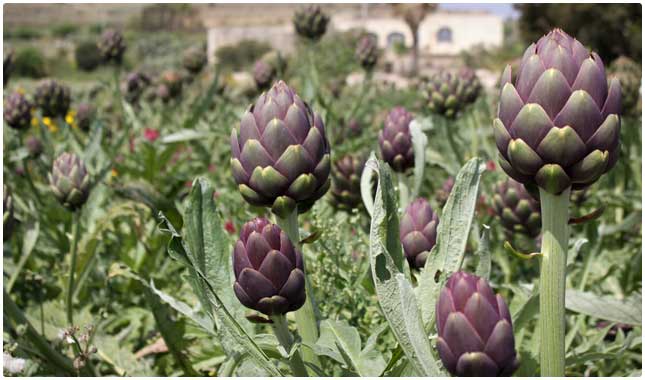
15. Artichokes
Artichokes don’t typically find their way onto many American plates, unless you count spinach artichoke dip as restaurant appetizer. But in order to keep it healthy you’ll have to eat them in their whole form. Try adding them to salads for some Mediterranean flair. They can typically be found in the deli section with things like potato salads and cole slaws. You can opt for canned or jarred varieties, but check the label to see if there is excessive sodium added to the marinade.
Benefits
Not to put too fine a point on it, your insides simply love artichokes. It helps with all sorts of digestive issues, and the fiber it contains keep things moving for you. They also have a healthy dose of Vitamin C, not enough to get you through the day, been when added to an already health-conscious diet you’ll find that it’s easier to meet all of your needs.
Vitamin Breakdown per 100g
Vitamin C – 20% of what’s needed each day for most adults.
Protein – 3.3g – Another good source of plant-based protein.
Fiber – 5.4g – A fifth of the fiber needed each day. Be sure to mix it up!
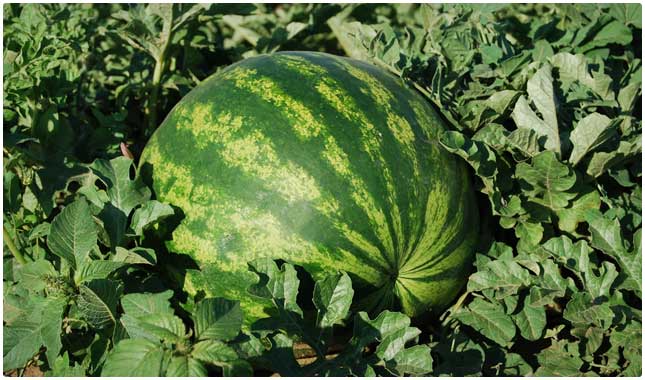
16. Watermelon
Who would have thought that this summertime treat is also one of the healthier foods you can have? Just be sure not to overdo it here, because it still contains sugars, even though they are all-natural, they can still cause a spike in insulin levels if you consume too much at one time.
Benefits
Although most people enjoy eating watermelon, and have a rough idea that it’s good for them since it’s a fruit, they aren’t sure exactly what it’s doing behind the scenes, or how great it is. First, it rivals tomatoes with its levels of lycopene, a very helpful in battling two big killers: heart disease and cancer. Aside from that it’s also a good source of other vitamins that are known to help cut down on free radical damage. It’s almost entirely fat free, so you can enjoy it without the guilt, as long as you consider the sugar as stated earlier.
Vitamin Breakdown per 100g
Vitamin A – 11% – Like any fruit worth its salt, it boosts your vitamin levels.
Vitamin C – 14% – Helping you to get to your daily intake of Vitamin C.
Fat – 0.1 – The most fat-free fruit we’ve seen.

17. Grapefruit
Grapefruit came into true prominence as a health food when it was included in the diet for recovering heart surgery patients. But it really does have a lot going for it, nutritionally speaking, and is worth a place in your kitchen, either as a breakfast item, or a between meals snack. The nice thing about buying them is they’re usually readily available in the produce section along with the other citrus fruits. You can also pick up some oranges, for while they didn’t make this list, they’re still a bonafide superfood.
Benefits
The high levels of Vitamin C and carotenoids are what gives grapefruit its bang for the buck. The reason it’s can be such a healthy start to your day is because it’s giving your body a one up on all the free radicals that might be present, or that might be introduced as you go about your day. If you make this part of your daily routine, you can work to prevent things like cancer and other degenerative diseases because you helped your body stay fighting strong day by day.
Vitamin Breakdown per 100g
Vitamin A – 23% – While Vitamin C gets a lot of attention, A is also important.
Vitamin C – 52% – Not bad, getting half your needs met with one serving.
Fiber – 1.6g – Considered a good source of fiber as well.

18. Asparagus
Asparagus should make it onto your plate on a pretty regular basis. It makes a great addition to a meal, like a side to salmon or other lean meats. The best way to prepare it seems to be to steam it, which locks in the flavor, makes it easy to chew up, as well as keeps the nutrients intact. Opt for organic if you can, and find it fresh in the produce section, or frozen in the frozen vegetable aisle.
Benefits
Asparagus is a good detoxifying vegetable, and has a diuretic effect, helping to purge the body of excess water, and flush toxins. Because of all of the vitamins and minerals it packs, it provides anti-aging benefits when eaten on a regular basis. The antioxidants will help lessen free radical damage, which can help you avoid all sorts of diseases and conditions if left unchecked. It can also help you stay sharp, by providing nourishment to the brain.
Vitamin Breakdown per 100g
Vitamin A – 20% – The ever-present Vitamin A makes another appearance on our list.
Protein – 2.4g – a good source of vegetable protein.
Fiber – 2g – may not seem like a lot, but ranks has a high fiber food.

19. Kelp
You might feel like a whale when you eat kelp, but you won’t grow to the size of one. In fact, since it’s pretty hard to come by in stores, most people turn to a kelp supplement to get the benefits from it. This makes it more easy to consume, since it’s not easy to buy, store, and prepare it. Whichever way you decide to add it to your diet, you’ll want to make sure that you
Benefits
Depending on who you ask there are varying benefits to kelp. Be sure that you’re getting your information from a source that isn’t trying to sell you a kelp supplement. The calcium in kelp appears to be what gets the spotlight, outdoing one of the most commonly thought of food items when it comes to calcium: milk. It also features an assortment of vitamins and minerals, and since it comes from the ocean, it’s a different makeup than land-based vegetables, with different varieties of phytonutrients.
Vitamin Breakdown per Cup
Folate – 396mcg – almost too much, so you don’t have to eat a lot.
Vitamin K – 145mcg – covers you for the day, and then some, so one serving is enough.
Sodium – 513mg – one potential drawback to consider if on a low-sodium diet.

20. Cabbage
Cabbage has been a widely known “health food” for decades now, and it seems the more studies they run on it, the better it looks. One of the easiest and tastiest ways to eat more cabbage is to make a soup out of it. You can also steam it for a great side dish to any meal. One tip: cut it into smaller pieces so it cooks quicker and is easier to eat.
Benefits
The fiber in cabbage will help to keep your digestive system operating at its full potential. The antioxidants are the key on this one as well as almost all of the items on this list, doing battle with the free radicals that occur as a result of stress and other factors. If you struggle with high cholesterol you’ll want to pay extra attention to cabbage as a way to keep it under control. It can also help to prevent or deter cancer due to its high levels of glucosinolates.
Vitamin Breakdown per Cup
Vitamin C – 61% – A surprising source of Vitamin C since it usually is associated with fruits.
Folate – 11% – You’ll want to make sure you get just enough, and cabbage really helps.
Protein – 1.3g – Not too much protein, but an interesting source that you might not have known.

Remember, these are just the big dogs when it comes to the healthiest foods out there. You can make an effort to include them in your daily diet, but don’t think that these are all you can have. The best way to eat is by giving your body what it needs from several different sources, while still hitting all of the most important vitamins and minerals. Keeping it balanced is also important, and there’s no need to “overdose” on certain foods just because they’re good for you.
Now that you know the superfoods you should be eating, take a look at which foods you should be avoiding.



























